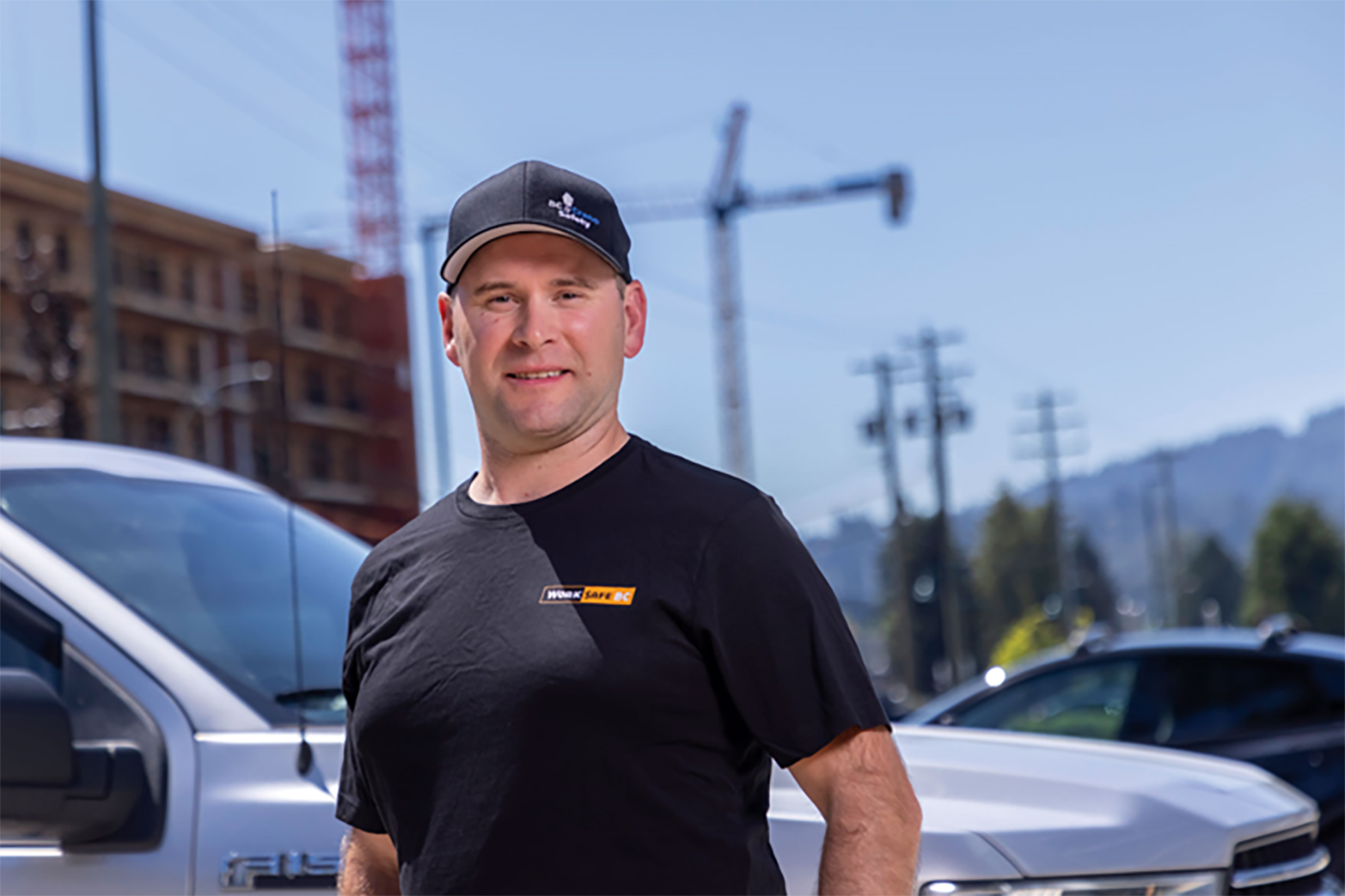Ask an officer: Upcoming regulation changes to improve tower crane safety
In 2021, a tower crane collapse in Kelowna took the lives of five workers, and earlier this year several crane-related incidents occurred, including a fatal incident in Vancouver that claimed the life of a worker.
Since that time, comprehensive work has been done across the industry to bring more awareness, education, and resources to those working with tower cranes. We spoke to WorkSafeBC’s Provincial Crane Inspection Team supervisor Jason Baia about a risk reduction strategy for tower cranes and a new regulation coming into effect on October 1, 2024.
Jason Baia
Provincial Crane Inspection Team supervisor, Prevention Field Services
Years on the job: 10
Region: Port Moody
What prompted the review of crane safety in our province?
At any given time, there are upwards of 350+ conventional tower cranes and 100+ self-erecting tower cranes erected around the province. These large, visible pieces of equipment take a lot of planning and coordination by all employers involved to assemble and operate safely. Unfortunately, when something goes wrong with equipment of that size, the results can be catastrophic. Incidents associated with cranes in B.C. are increasing as more and more cranes are operating on complex, multi-employer, and multi-crane worksites.
What is the risk-reduction strategy and what were some of the key recommendations found?
Thanks to input from our industry and labour partners, we conducted a comprehensive crane safety review and made recommendations aimed at improving crane safety in B.C. This includes:
- Focusing on operator certification, qualifications, competencies, and supervision
- Updating the Occupational Health and Safety Regulation to meet the needs of increasingly complex worksites
- Increasing the staffing and capacity of WorkSafeBC’s specialized crane inspection team
- Ensuring proper certification, inspections, and preventive maintenance of cranes
- Ensuring that the BC Association for Crane Safety is equipped to service and support workers and employers in the sector
What are the changes coming into effect on October 1, 2024, and what do employers need to know?
The Notice of Project-Tower Cranes regulation will provide greater visibility and awareness around crane activity throughout the province. Employers will need to provide WorkSafeBC with a Notice of Project (NOP) two weeks before any planned crane activity such as the erection, dismantling, repositioning, or climbing of a crane tower. This will foster better collaboration among employers, contractors, and the city, and ensure everything is in place before the work begins. We’ll also be able to work with crews to make sure they have the proper site-specific procedures in place, that everyone has the necessary qualifications, and that workers have adequate supervision, training, and experience.
This data collection will also help us better understand the industry — who the employers are, where they’re located, and what kind of equipment they’re using and how often, so we can identify gaps and focus our resources. The more data we have, the better we’ll be able to respond to the needs of the industry and adjust as we see trends emerge.
What is the focus of the 2024 crane and mobile equipment inspection initiative?
We will focus on four main areas: Operator qualifications & competencies, site supervisor responsibilities, preventive maintenance, and equipment assembly/disassembly. We’ll be looking at operator competency assessments to ensure that all operators — from brand new to those with decades of experience — have the necessary knowledge, assessment, training, and supervision to operate their specific equipment safely.
Where can employers go for more information or support?
Visit our webpage on the Cranes & Mobile Equipment Planned Inspectional Initiative to learn more about our goals and focus. The cranes & mobile equipment webpage provides more information and resources to help keep workers safe. You can also call WorkSafeBC’s Prevention Information Line (toll-free at 1.888.621.7233) at any time, especially before work begins, to speak to one of our Crane Team members.
The BC Crane Safety website at bccranesafety.ca also has information and resources to support employers and supervisors stay up to date with the latest safety information.
Looking for answers to your specific health and safety questions? Send them to us at worksafemagazine@worksafebc.com and we’ll consider them for our next “Ask an officer” feature.
This information originally appeared in the Fall 2024 issue of WorkSafe Magazine. To read more or to subscribe, visit WorkSafe Magazine.

